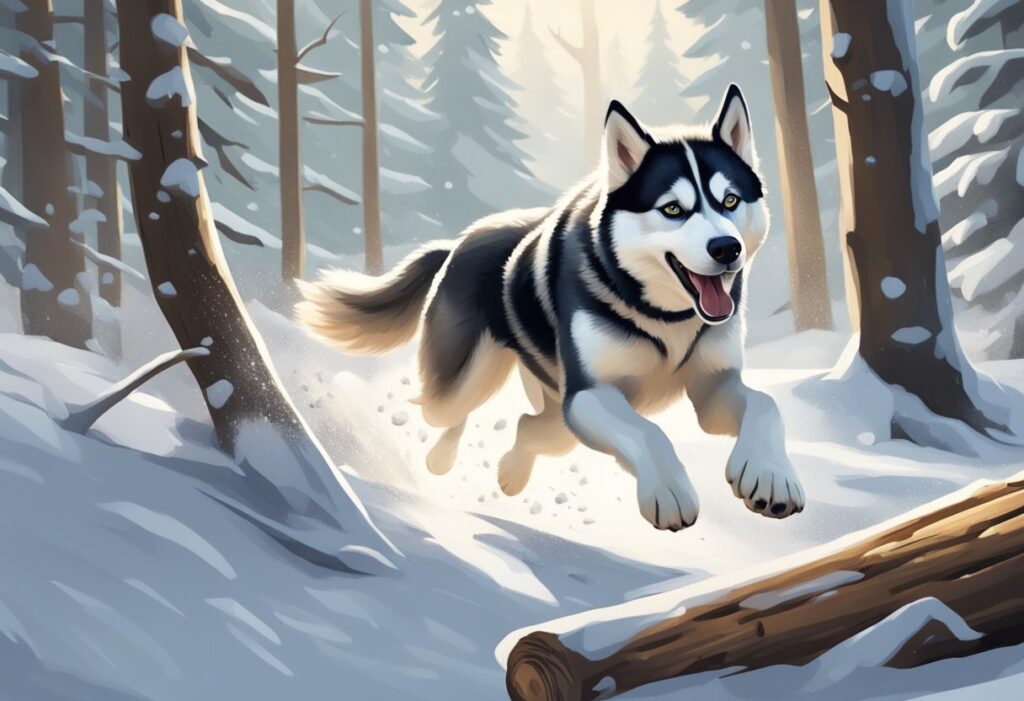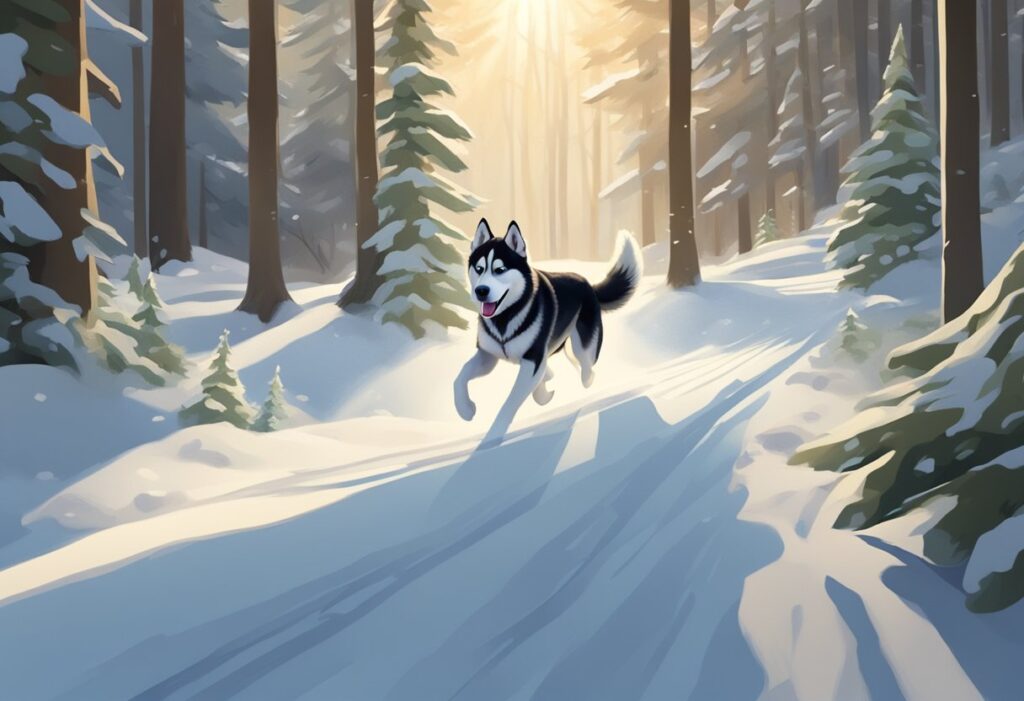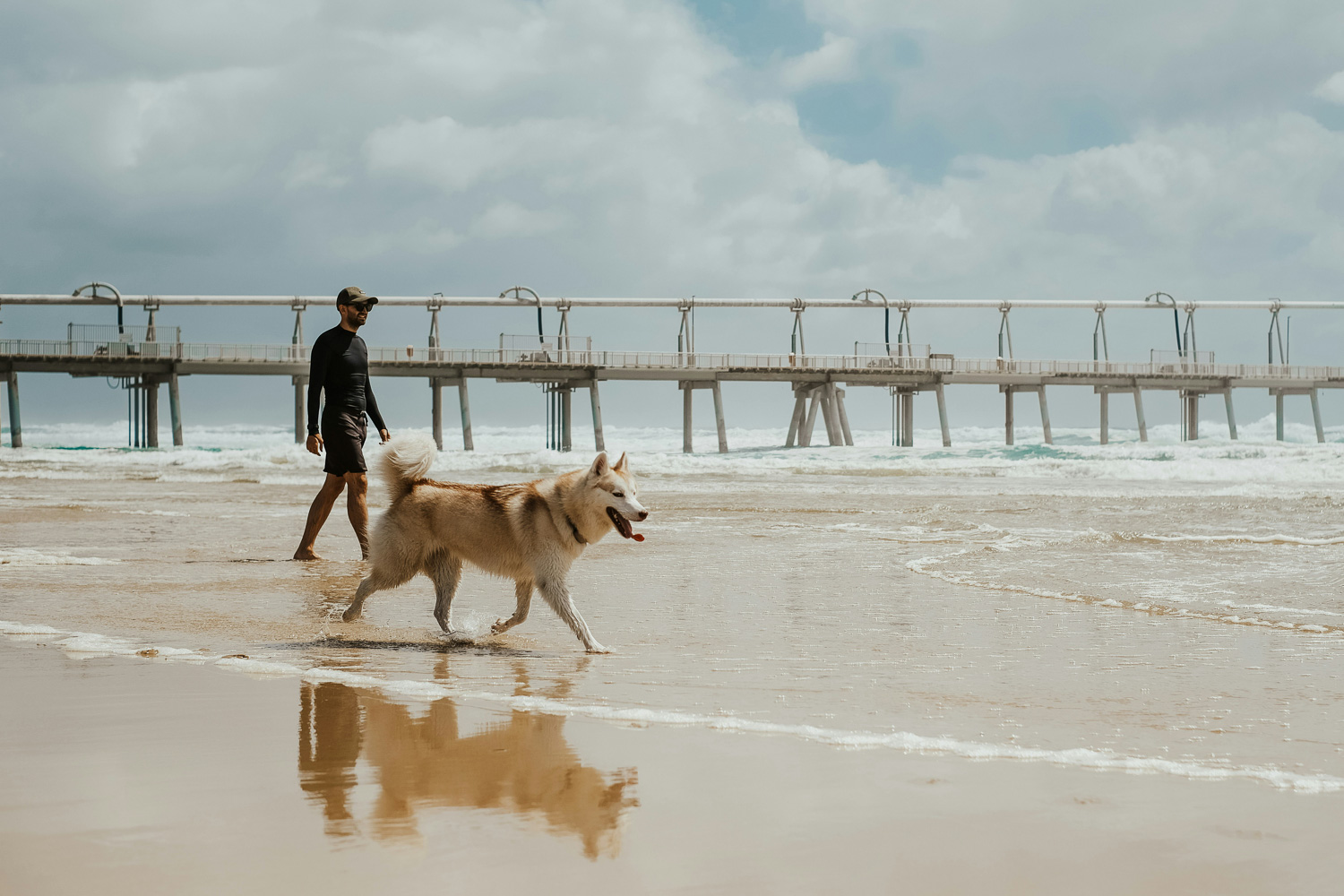Huskies are energetic, athletic dogs that require a structured exercise routine to maintain their physical and mental well-being. These intelligent and active canines thrive on regular physical activity, which helps prevent behavioral issues and promotes overall health. A well-designed husky exercise routine typically includes a combination of daily walks, runs, and engaging activities that challenge both body and mind.

Developing an effective exercise plan for a husky involves understanding their unique needs and capabilities. These dogs were originally bred for sledding, so they have exceptional endurance and stamina. A proper routine should incorporate activities that allow them to expend their energy while also providing mental stimulation. This can include activities like hiking, swimming, or participating in dog sports such as agility or skijoring.
Consistency is key when implementing a husky exercise routine. Regular physical activity not only helps maintain a healthy weight and strong muscles but also contributes to better behavior and reduced anxiety. By providing ample opportunities for exercise and mental engagement, husky owners can ensure their furry companions lead happy, healthy lives.
Key Takeaways
- Huskies require a balanced exercise routine combining daily walks, runs, and engaging activities
- Regular physical activity prevents behavioral issues and promotes overall health in huskies
- Consistent exercise helps maintain a healthy weight, strong muscles, and reduces anxiety in huskies
Understanding Huskies’ Exercise Needs
Siberian Huskies are high-energy dogs with significant exercise requirements that vary based on age. Proper physical activity is crucial for their physical and mental well-being, helping prevent behavioral issues.
The High Energy Levels of Siberian Huskies
Huskies were bred as working dogs, pulling sleds over long distances in harsh Arctic conditions. This heritage has resulted in a breed with exceptional stamina and energy levels.
A typical adult Husky requires 1-2 hours of intense exercise daily.
This can include:
- Long walks or jogs
- Running alongside a bicycle
- Skijoring or sledding
- Agility training
Without adequate outlets for their energy, Huskies may become restless and destructive. Regular exercise helps maintain their muscular physique and cardiovascular health.
Exercise Requirements for Different Ages
Husky exercise needs change throughout their lifespan:
Puppies (0-1 year):
- Short, frequent play sessions
- Avoid high-impact activities
- Focus on socialization and basic training
Adult Huskies (1-7 years):
- 1-2 hours of intense daily exercise
- Mix of cardio and strength-building activities
- Mental stimulation through training and games
Senior Huskies (8+ years):
- Moderate, low-impact exercise
- Shorter duration but still regular
- Swimming or gentle walks
Adjust exercise intensity based on individual health and fitness levels. Consult a veterinarian for personalized advice.
Common Behavioral Problems from Insufficient Exercise
Inadequate physical activity can lead to various behavioral issues in Huskies:
- Excessive barking or howling
- Destructive chewing
- Digging in the yard
- Escape attempts
- Hyperactivity indoors
These behaviors often stem from boredom and pent-up energy. A consistent exercise routine can significantly reduce or eliminate these problems.
Regular exercise also helps prevent obesity, which can lead to joint issues and other health problems in Huskies. Combining physical activity with mental stimulation through training and interactive toys provides a well-rounded approach to keeping Huskies happy and healthy.
Creating an Effective Exercise Routine
Huskies require a well-structured exercise regimen to maintain their health and happiness. A balanced routine combines daily activities, varied exercises, and consistent training sessions.
Daily Exercise Recommendations
Huskies need at least 2 hours of exercise daily. This should include a mix of moderate and vigorous activities. A brisk 30-minute walk in the morning and evening forms a solid foundation.
Add 30-45 minutes of intense play or running. Off-leash time in a secure area allows huskies to sprint and burn energy. Fetch, tug-of-war, or agility training provide mental stimulation alongside physical exertion.
Incorporate 15-20 minutes of obedience training. This reinforces commands and strengthens the bond between husky and owner.
Variety in Activities
Huskies thrive on diverse exercises. Rotate activities to prevent boredom and target different muscle groups.
Swimming offers low-impact, full-body exercise. Hiking challenges their endurance and satisfies their exploratory nature. Skijoring or bikejoring taps into their natural pulling instinct.
Puzzle toys and scent work engage their minds. Agility courses combine physical and mental challenges. Social play with other dogs fulfills their pack instincts.
Importance of Consistency
Regular exercise is crucial for a husky’s well-being. Establish a daily routine and stick to it. Consistency helps manage their high energy levels and prevents destructive behaviors.
Set specific times for walks, play, and training. This creates a predictable schedule that huskies can anticipate and rely on. Maintain the routine even in bad weather, adjusting activities as needed.
Consistent exercise improves sleep patterns, aids digestion, and reduces anxiety. It also strengthens the bond between husky and owner through shared activities and experiences.
Recommended Exercises for Huskies
Huskies are energetic dogs that thrive on physical activity. A well-rounded exercise routine combines cardiovascular training, strength workouts, and play-based activities to keep them healthy and happy.
Cardiovascular Training: Running and Hiking
Running is an excellent exercise for huskies, tapping into their natural endurance. Start with short jogs and gradually increase distance and duration. Aim for 30-60 minutes of running 3-4 times a week. Vary the terrain to keep it interesting.
Hiking offers mental stimulation along with physical exertion. Choose trails with different elevations and surfaces. Begin with 1-2 hour hikes and extend as your husky’s fitness improves. Always bring water and take breaks as needed.
For sled dogs or those in colder climates, skijoring combines skiing and dog sledding. It provides an intense workout while embracing the husky’s pulling instinct.
Strength and Agility Workouts
Agility training enhances a husky’s coordination and mental acuity. Set up an obstacle course with jumps, tunnels, and weave poles. Start with basic commands and progress to more complex sequences.
Incorporate strength exercises like:
- Uphill walks to build leg muscles
- Tug-of-war using appropriate toys
- Weighted vest walks (consult a vet first)
Swimming is low-impact and great for overall body conditioning. Introduce your husky to water gradually and always supervise.
Play-Focused Exercises
Fetch combines running with play. Use a frisbee or ball, throwing longer distances as your husky’s stamina improves. Limit sessions to 15-20 minutes to prevent overexertion.
Hide-and-seek engages a husky’s mind and body. Hide treats or toys around the yard or house, encouraging them to search. This activity taps into their natural tracking instincts.
Dog sports like flyball or dock diving provide structured play and exercise. These activities challenge huskies physically and mentally while offering socialization opportunities.
Maintaining Husky Health and Safety

Proper care and attention to a Husky’s health and safety are crucial for their well-being. Regular monitoring, environmental adaptations, and professional guidance help ensure these active dogs stay fit and injury-free.
Recognizing Signs of Overexertion and Injuries
Huskies are energetic dogs that may push themselves too hard. Watch for signs of fatigue like excessive panting, slowing down, or reluctance to continue exercising.
Limping, favoring a leg, or yelping when touched could indicate an injury. Check paw pads for cuts or abrasions after runs on rough terrain.
Swelling, heat, or tenderness in joints may signal sprains or strains. Rest the dog and apply ice if these symptoms appear.
Monitor for dehydration by checking gum color and skin elasticity. Provide fresh water before, during, and after exercise.
Adapting to Weather Conditions and Environment
Huskies have thick double coats that insulate against cold and heat. Still, they need protection in extreme temperatures.
In hot weather:
- Exercise early morning or evening
- Provide shade and cool water
- Watch for signs of heatstroke (excessive drooling, vomiting)
In cold weather:
- Check paws for ice buildup
- Use booties on salted roads
- Brush out undercoat to maintain insulation
Adjust exercise intensity based on air quality. Reduce outdoor time on high pollution days.
Consider indoor activities during severe weather to maintain physical and mental stimulation.
Consulting with Veterinarians
Regular vet check-ups are essential for maintaining a Husky’s health. Schedule annual exams to catch potential issues early.
Discuss exercise plans with your vet, especially for puppies or older dogs. They can advise on appropriate intensity and duration.
Ask about preventive care like vaccinations and parasite control. These protect your Husky during outdoor activities.
Consult your vet if you notice changes in appetite, energy levels, or behavior. These could be signs of underlying health issues.
Work with your veterinarian to develop a nutrition plan that supports your Husky’s active lifestyle and prevents obesity.
Additional Training and Socialization
Huskies thrive with proper training and socialization. These activities enhance their mental stimulation, improve behavior, and create well-rounded canine companions.
Obedience Training and Good Behavior
Obedience training is crucial for huskies. Start with basic commands like sit, stay, come, and leave it. Use positive reinforcement techniques, rewarding good behavior with treats and praise.
Consistency is key. Practice commands daily in short sessions to maintain interest. Gradually increase difficulty as your husky progresses.
Address common husky behaviors like pulling on the leash or excessive barking. Redirect unwanted actions to more appropriate ones. Professional training classes can provide structured guidance and help with socialization.
Socializing with Other Dogs and People
Early socialization is vital for huskies. Expose them to various people, animals, and environments from a young age.
Arrange playdates with other friendly dogs. Visit dog parks once your husky has basic obedience skills. Supervise interactions closely to ensure positive experiences.
Introduce your husky to different types of people, including children, in controlled settings. Reward calm behavior around new individuals.
Attend obedience classes or group training sessions. These provide opportunities for socialization in a structured environment.
Leash Training and Off-Leash Activities
Start leash training early. Use a sturdy harness designed for strong pullers. Begin with short walks, rewarding your husky for walking calmly by your side.
Gradually increase walk duration and introduce distractions. Practice in various environments to reinforce good leash manners.
Teach a reliable recall command before allowing off-leash activities. Use a long lead in enclosed areas to practice recall safely.
Engage in off-leash activities in secure locations. Consider fenced dog parks or large enclosed spaces. Always supervise your husky closely during off-leash time.


Leave a Reply